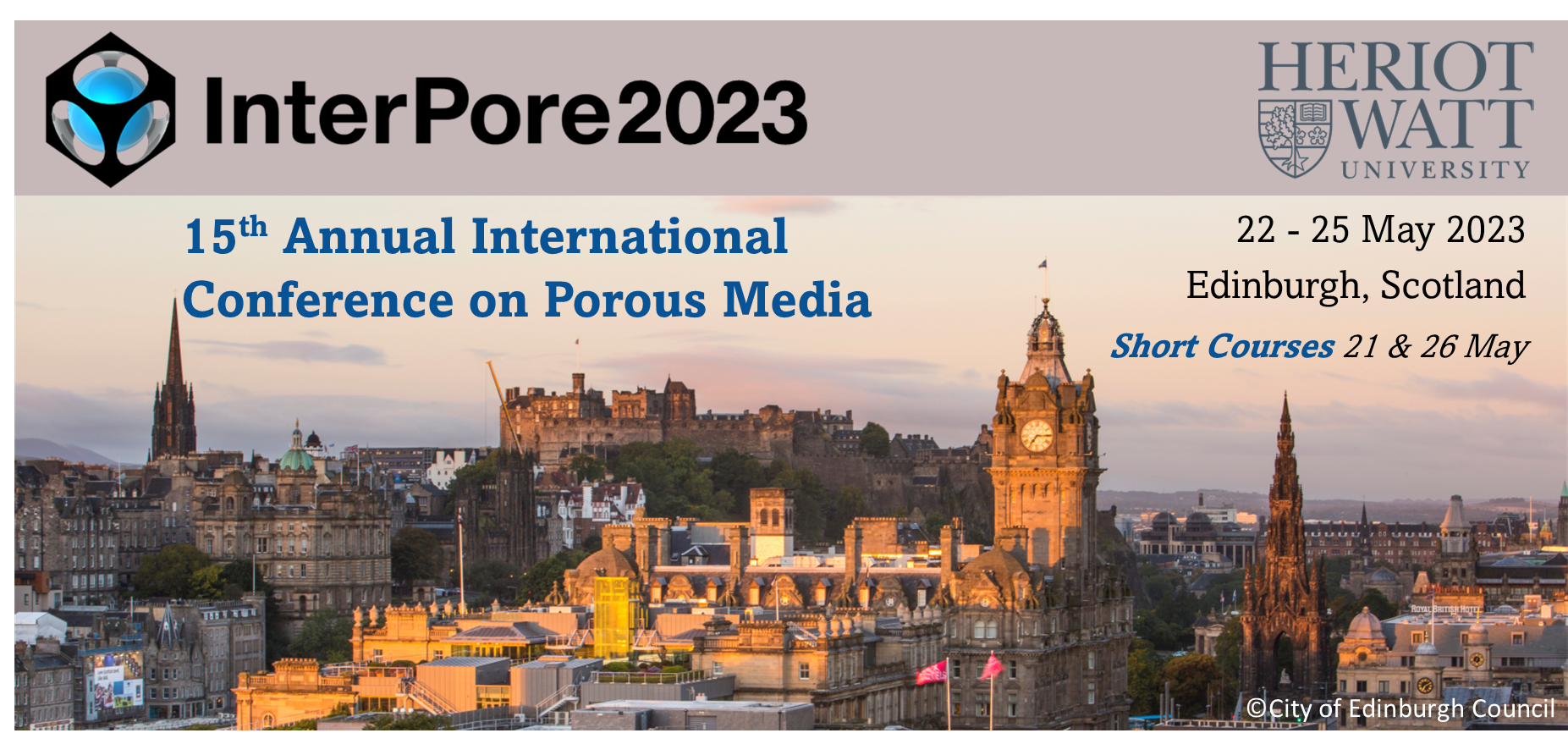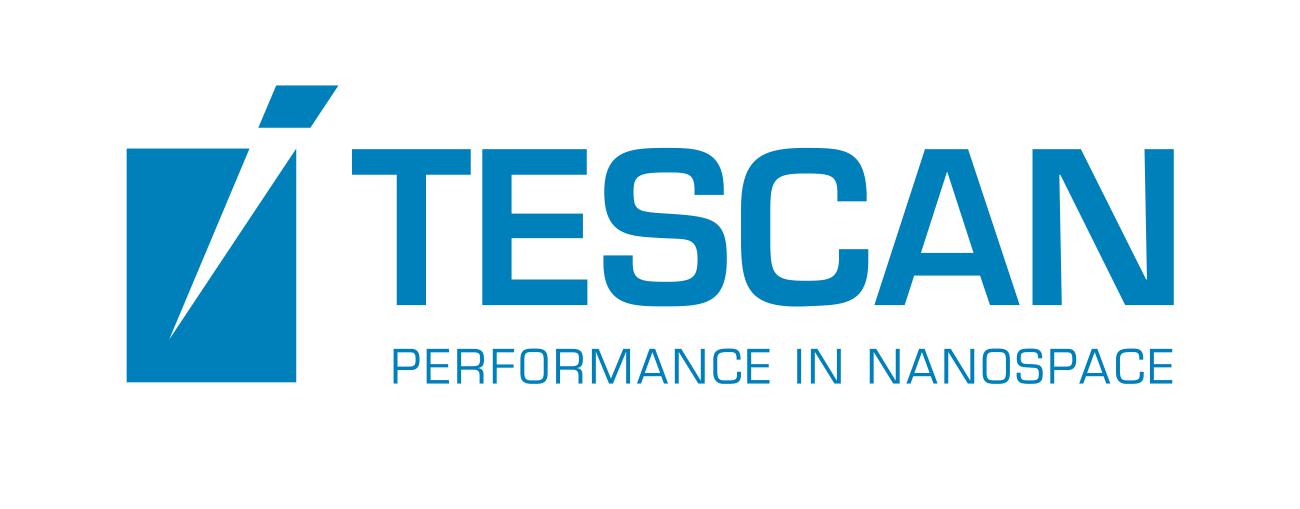In this study, we investigate the feasibility of Electrical Capacitance Tomography (ECT) to image rapid three-dimensional (3D) moisture transport in damaged portland cement mortar and concrete. ECT is a tomography method that uses inter-electrode capacitance measurements to reconstruct the internal 3D distribution of the electrical permittivity which carries contrast with respect to moisture...
Hierarchically structured materials consist in multiphase (crystalline-amorphous) materials also presenting a multiscale porosity. Such materials are widely used for the decontamination of liquid effluents in fixed-bed processes. Indeed, charge-compensating ions in their structure allow them to perform a selective cationic exchange. Their decontamination efficiencies are finely determined...
Multiphase flow in porous media is an important process in a variety of Earth science applications, from groundwater remediation to subsurface CO2 and H2 storage. The associated pore-scale flow dynamics have been the subject of active research for decades, due to their non-linear nature and the difficulty of measuring and modeling them in the complex pore geometries of geo-materials. While...
OBJECTIVE/SCOPE
Surface roughness is a sneaky troublemaker for interpreting pore size distribution from NMR T2 responses. Thus, it is of vital importance to characterize surface roughness and quantify its effect on NMR T2 relaxation. In our preceding work, the 3D pore roughness was evaluated by weighted averaging of the roughness measurements of 2D thin sections. This work presents a...
Synchrotron light sources present advantages over laboratory-based X-ray Computed Tomography (XCT) in terms of spatial and temporal resolution. The reasons are the smaller size of the X-ray source and the higher photon flux generally achieved in particle accelerators. In this context, Sirius, the Brazilian 4th generation light source, will count on a world-leading micro and nano X-ray imaging...
Abstract
Digital core reconstruction is essential for the numerical simulation of reservoir fluid microscopic flow. However, the existing reconstruction methods, including physical experiments and numerical simulation, cannot construct the digital core reflecting the effect of in-situ stresses. The discrete element method (DEM) is considered reliable in solving this problem. However, in...
The predictive power of numerical approaches for the analysis of flow fields and, e.g., radionuclide migration, depends on the quality of the underlying pore network geometry. Validation of the obtained simulation results can only be performed with a limited number of methods. Positron emission tomography (PET) is a suitable technique that has been established in geomaterial sciences in recent...
In this study, reaction experiments between CO2-saturated brine and wellbore cement samples cured under different pressures were conducted to study microstructural and mineral composition changes using microcomputed tomography (micro-CT), scanning electron microscopy (SEM) and Raman spectroscopy. The CT images of post-CO2 exposure cement samples showed a dissolution-precipitation-dissolution...
1. OBJECTIVE/SCOPE (25-75 words)
High-quality digital rock porous images are required hours to obtain using micro-Computed Tomography (𝜇-CT), while low-quality digital rock images only take a few minutes. To reduce the scanning time while keeping the high-resolution pore structures, we propose an Attention-Res-UNet-based Wasserstein generative adversarial network with gradient penalty...
The end of single plastic packaging is scheduled in Europe around 2040.
Cellulosic materials such as paper and cardboard are today the only viable bio-sourced alternative, biodegradable and already recycled, which can reach a mass market. Paper is a multiporous material with a large surface area accessible to contaminants. The transport of contaminants via the gas phase or cycles of...
Freeze-drying is a gentle drying technique for high value products such as pharmaceuticals. The process can mainly be separated in three steps. (1) The freezing step, here the actual microstructure of the final product can be formed. (2) The primary drying removes the ice out of the product by sublimation. (3) The secondary drying is used to remove the bound water inside the matrix by...
Wetting and drying cycles in porous media are encountered in many natural systems, as well as engineered systems. Soils are exposed to these cycles many times, as water infiltrates during rain and dries out afterwards. These cycles are also important in cyclic usage of underground reservoirs, for example for storage of natural gas or hydrogen [1]. Important during gas storage is to retain a...
Imaging fluid flows provides valuable physical insight, especially for complex fluids as emulsions, foams and dispersions. Unfortunately, high temporal and spatial resolution of flow in porous media still poses a grand challenge. In this study, we present a multiscale approach to study the spatio-temporal flow dynamics in realistic porous media of Pickering emulsions stabilized using...
CO2-electrolysis (CO2ELY) is a promising technology to harvest the temporal surplus of renewable energy and convert CO2 into valuable non-fossil feedstock for green chemistry. CO2ELY is similar to water electrolysis. CO2-gas is fed to the cathode to be electrochemically reduced, e.g. to CO, with an adapted catalyst. We employ time-resolved synchrotron X-ray tomographic microscopy (XTM) to...
Dissolution of porous media introduces positive feedback between fluid transport and chemical reactions at mineral surfaces leading to the formation of pronounced wormhole-like channels. While the impact of flow rate and reaction rate on the shapes of the wormholes is now well understood, much less is known about the dynamics of their propagation. In this communication, we show how the ...
Climate change leads to intensified weathering cycles on landscapes and the built environment. Energy transition strategies such as seasonal storage of biogas or hydrogen in aquifers, introduce cyclic perturbations in the underground environment. In both cases precipitation-dissolution cycles of salts are induced. When precipitation occurs inside the pore space, stresses build up which may...
High concentration CO2 invades oilwell cement under geological CO2 storage or sour oil and gas exploitation conditions. Long-term invasion of CO2 makes oilwell cement structure unstable and prone to damage. For the reinforcement of oilwell cement, Ca-montmorillonite (Ca-MMT) was modified using supercritical CO2 (ScCO2) as the solvent and intercalator. The micro-calcite bearing...
Pore size distribution (PSD) is a key parameter in Shale & Tight (S&T) reservoir evaluation, significantly contributing to our understanding of storage capacity and distribution / producibility of reservoir fluids. We have taken a collaborative approach to develop a new workflow for evaluation of PSD through the integration of (lab-based) 2D Scanning Electron Microscopy (SEM) and Nuclear...
Pore and pore network characterization in clays and claystones is essential as they are of longtime and continuing importance in conventional hydrocarbon exploration, unconventional reservoirs and gas (e.g. CO2 and N2; Vernooij et al., 2020), and radioactive waste (Plúa et al., 2021) storage caprocks. Nonetheless, they also occur within the reservoir where they can act as local baffles (Benham...
The pre-salt is a geological formation of sedimentary rocks with organic content formed more than 100 million years ago, by the accumulation of organic matter on the south-eastern coast of Brazil during the separation of the American and African continents. The subsequent formation of the Atlantic Ocean led to the subsequent deposition of a layer of salt, which nowadays reaches 2 km in...
Typical geological systems are composed of a broad spectrum of porous media with regionalized rock properties such as porosity or permeability varying by orders of magnitude within a volume of study. Upscaling the petrophysical rock properties is controlled by the rock pore size and type heterogeneity which is a scale-dependent variable. At the same time, Recent advances in high-resolution...
The efficiency of short and long term underground hydrogen storage in subsurface porous media is one of the limiting technical challenges facing the renewable energy industry. Storage and withdrawal efficiency may depend on microbial consumption of molecular hydrogen promoted by conducive environmental and physical conditions in the porous medium that favour growth and survival of many...







